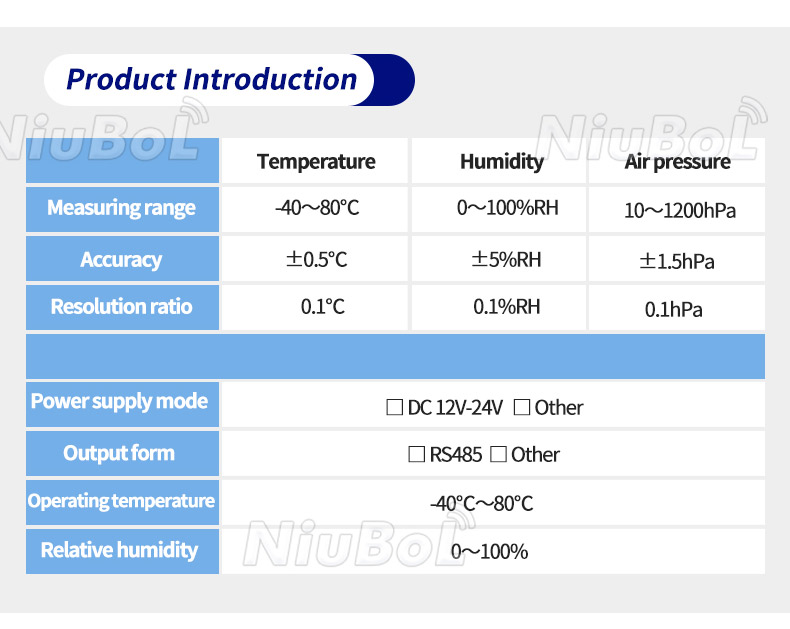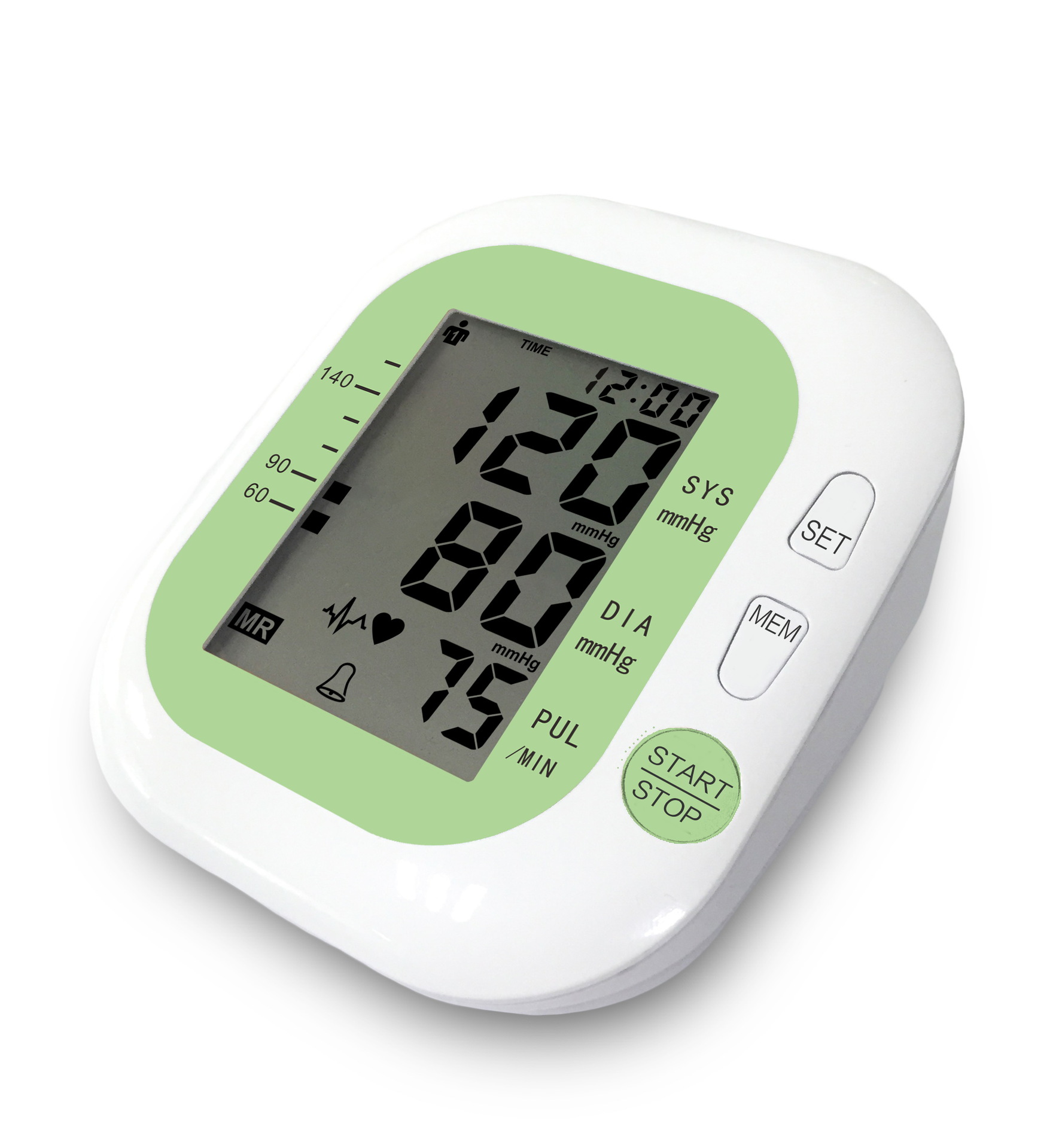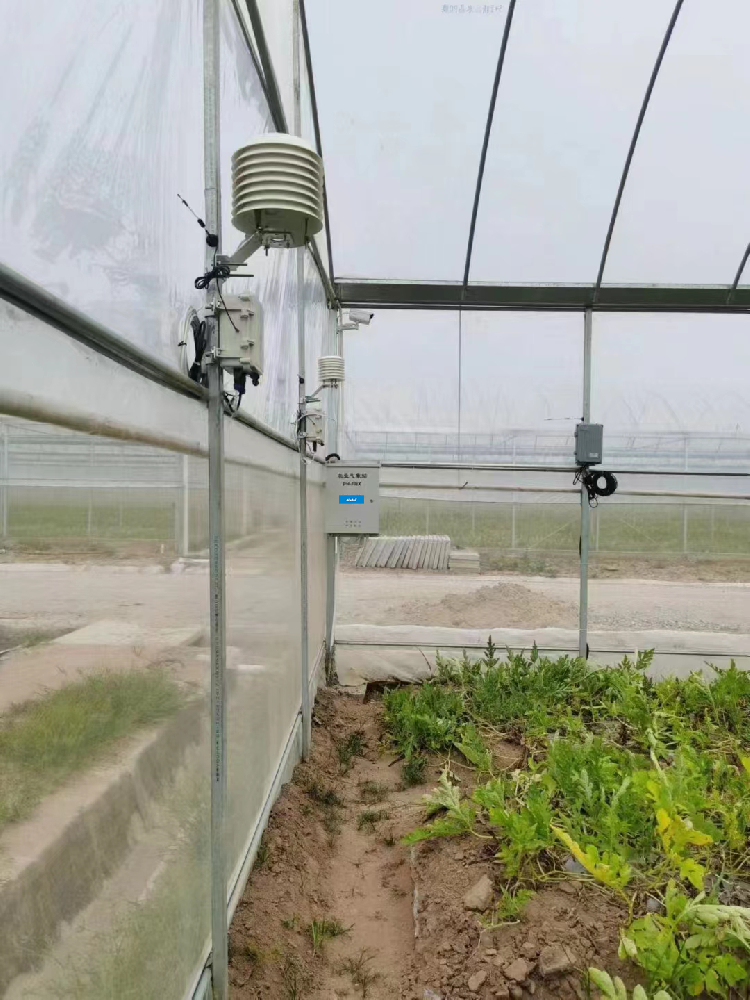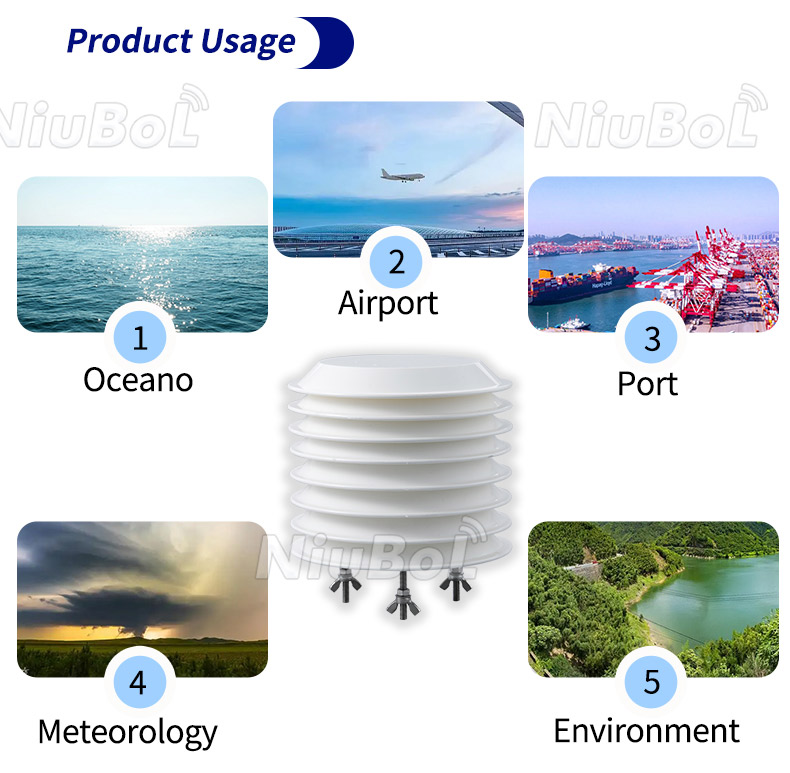

— Blogs —
—Products—
 Consumer hotline +8618073152920
Consumer hotline +8618073152920 WhatsApp:+8615367865107
Address:Room 102, District D, Houhu Industrial Park, Yuelu District, Changsha City, Hunan Province, China
Product knowledge
Time:2024-09-17 10:32:59 Popularity:1040
An ambient barometer is a device used to measure the atmospheric pressure of its surroundings, often referred to as ambient pressure. It is capable of detecting changes in the air pressure of its surroundings, usually measured in hectopascals (hPa) or millibars (mbar). This type of barometer is vital for a variety of applications where accurate and real-time atmospheric pressure data is essential. Ambient barometers have a wide range of applications in weather forecasting, aviation, mountaineering, and scientific research.
The working principle of an ambient barometer is mainly based on the response of the sensitive elements inside the barometer to changes in air pressure. These sensitive elements can be metal membrane box, silicon diaphragm, etc., they will be deformed with the change of external air pressure. When the air pressure rises, the sensitive elements are compressed, generating a corresponding electrical signal; when the air pressure decreases, the sensitive elements return to their original state, and the electrical signal changes. By measuring the changes in these electrical signals, the current air pressure value can be deduced.

Ambient barometers work by detecting changes in the weight of the air above them, which is directly related to atmospheric pressure. There are several methods of measuring pressure in an ambient barometer:
- Utilizing a sealed metal box (called an empty or membrane box), the air pressure inside the box remains constant when the external air pressure changes, resulting in a change in the shape of the box. This change is converted into a movement of a pointer through a mechanical connection to indicate the barometric pressure value.

- A piezoelectric sensor or capacitive sensor is used to measure air pressure. The sensitive element in a piezoelectric sensor generates an electrical charge when subjected to air pressure, the amount of which is proportional to the air pressure. Capacitive sensors, on the other hand, determine air pressure by measuring changes in capacitance.

- Induction: the sensor senses atmospheric pressure.
- Conversion: the air pressure is converted into an electrical signal.
- Processing: the electrical signal is amplified and processed.
- Display: The final display is a readable barometric value.
The traditional mercury barometer was invented by Evangelista Torricelli in 1643, which uses a column of mercury in a sealed tube to balance the weight of the atmosphere. As the atmospheric pressure changes, the height of the column of mercury is adjusted accordingly.

- Used in weather stations to monitor changes in barometric pressure and aid in weather forecasting. Changes in barometric pressure often indicate changes in the weather, such as a drop in barometric pressure may indicate an approaching storm.
- Used in airplanes to measure flight altitude, as altitude is related to barometric pressure. Barometers help pilots determine the altitude of an airplane and navigate.
- Mountaineers and outdoor enthusiasts use ambient barometers to predict weather changes, assess altitude, and monitor physical health.
- Used in scientific research and education to help students and researchers understand the effects of atmospheric pressure on the environment and climate.
- In smart home systems, barometers can be used to monitor changes in indoor and outdoor air pressure, working in conjunction with other sensors to provide more comprehensive information about the living environment.
On board ships, ambient barometers help predict sea conditions and plan routes. They are also used to adjust for changes in atmospheric pressure when calibrating instruments.
In mountaineering and outdoor activities, portable ambient barometers help to determine altitude and monitor weather conditions at high altitudes.
In industries such as oil and gas, ambient barometers are used to monitor pressure conditions in storage tanks and pipelines to ensure safety and operational efficiency.

Summarize
The ambient barometer is an important sensor device that provides vital data support by measuring changes in air pressure in the surrounding environment. It has a wide range of applications in weather forecasting, aviation and navigation, mountaineering and exploration, as well as smart home and health monitoring. The value of ambient barometers lies in their ability to provide accurate atmospheric pressure data to help people better understand weather changes, ensure aviation safety, and play an important role in scientific research and education.
Related recommendations
Sensors & Weather Stations Catalog
Agriculture Sensors and Weather Stations Catalog-NiuBoL.pdf
Weather Stations Catalog-NiuBoL.pdf
Related products
 Combined air temperature and relative humidity sensor
Combined air temperature and relative humidity sensor Soil Moisture Temperature sensor for irrigation
Soil Moisture Temperature sensor for irrigation Soil pH sensor RS485 soil Testing instrument soil ph meter for agriculture
Soil pH sensor RS485 soil Testing instrument soil ph meter for agriculture Wind Speed sensor Output Modbus/RS485/Analog/0-5V/4-20mA
Wind Speed sensor Output Modbus/RS485/Analog/0-5V/4-20mA Tipping bucket rain gauge for weather monitoring auto rainfall sensor RS485/Outdoor/stainless steel
Tipping bucket rain gauge for weather monitoring auto rainfall sensor RS485/Outdoor/stainless steel Pyranometer Solar Radiation Sensor 4-20mA/RS485
Pyranometer Solar Radiation Sensor 4-20mA/RS485
Screenshot, WhatsApp to identify the QR code
WhatsApp number:+8615367865107
(Click on WhatsApp to copy and add friends)